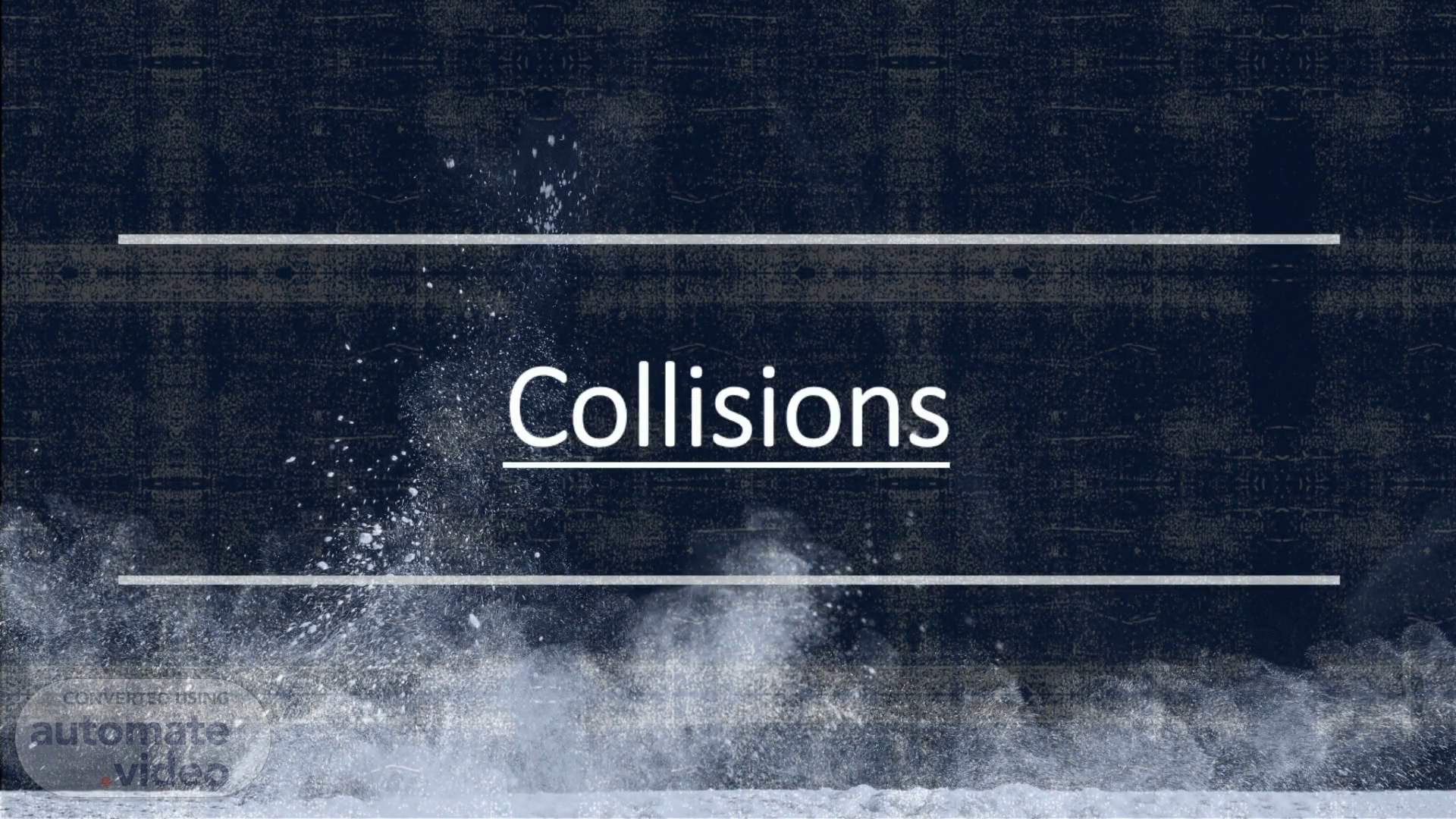Scene 1 (0s)
[Audio] Hi everyone Today our topic is collisions.
Scene 2 (9s)
[Audio] An event by which particles come close to each other And interact by means of force is called collisions. Or When two objects come close to each other in such a way They interact each other The collision is said to be take place The force due to which collisions are Assumed to be much larger than any external force.
Scene 3 (38s)
[Audio] There are two types of collisions Elastic collision Inelastic collision.
Scene 4 (49s)
[Audio] Elastic collisions An elastic collision is the collision in which Kinetic energy and momentum of system Remains conserved. For example The collision between atomic and subatomic particles.
Scene 5 (1m 9s)
[Audio] In elastic collisions The collision in which momentum of system Remains conserved but Kinetic energy cannot For example The collision between billiard balls Or colliding cars.
Scene 6 (1m 29s)
[Audio] Perfectly elastic collision in one dimension The collision in which Two objects move along a straight line Before and after collision Is called collision in one dimension.
Scene 7 (1m 46s)
[Audio] Consider two bodies of masses M one and m two Moving with velocity u one and u two as shown in When u two is greater than u one Two bodies collide each other After collisions their velocities becomes V one and v two respectively.
Scene 8 (2m 12s)
[Audio] As the collision is perfectly elastic So according to law of conservation of momentum Total momentum before collision equal to Total momentum after collision M one u one plus m two u two equal to M one v one plus m two v two Rearranging equation M one u one minus m one v one equal to M two v two plus m two u two Taking common m one and m two on both sides M one into u one minus v one equal to M two into v two minus u two.
Scene 9 (3m 1s)
[Audio] According to law of conservation of kinetic energy Kinetic energy before collision equal to Kinetic energy after collision One by two m one u one square plus One by two m two u two square equal to One by two m one v one square plus One by two m two v two square Rearranging equation M one u one square minus m one v one square equal to M two v two square minus m two u two square Taking common m one and m two on both side Then expend it by formula The equation becomes M one into u one minus v one into u one plus v one equal to m two into v two minus u two into v two plus u two.
Scene 10 (4m 5s)
[Audio] Divide equation a by equation b we get U one plus v one equal to v two plus u two Or U one minus u two equal to Minus v one minus v two The difference in velocities are same as before collisions But its direction is reversed after collisions as Indicated by minus sign The relative speed of approach in magnitude is equal to Relative speed of recession From equation c find value of v two V two equal to u one plus v one minus u two.
Scene 11 (4m 55s)
[Audio] Put values in equation a M one u one plus m two u two equal to M one v one plus m two u one plus m two v one minus m two u two On rearranging equation M one plus m two into v one equal to M one minus m two into u one plus two m two u two Dividing m one plus m two on both sides then V one equal to M one minus m two divided by m one plus m two into u one plus Two m two u two into m one plus m two Here v one be the velocity in which a body of mass m one Move with velocity.
Scene 12 (5m 50s)
[Audio] Similarly for v one From equation c Find value of v one V one equal to V two minus u one plus u two Put values in equation a We get value of v two V two equal to Two m one u one by m one plus m two minus M one minus m two u two by m one plus m two Here v two be the velocity in which a body of mass m two move with velocity.
Scene 13 (6m 31s)
[Audio] Thanks for watching us. Blue digital binary data on a screen.
